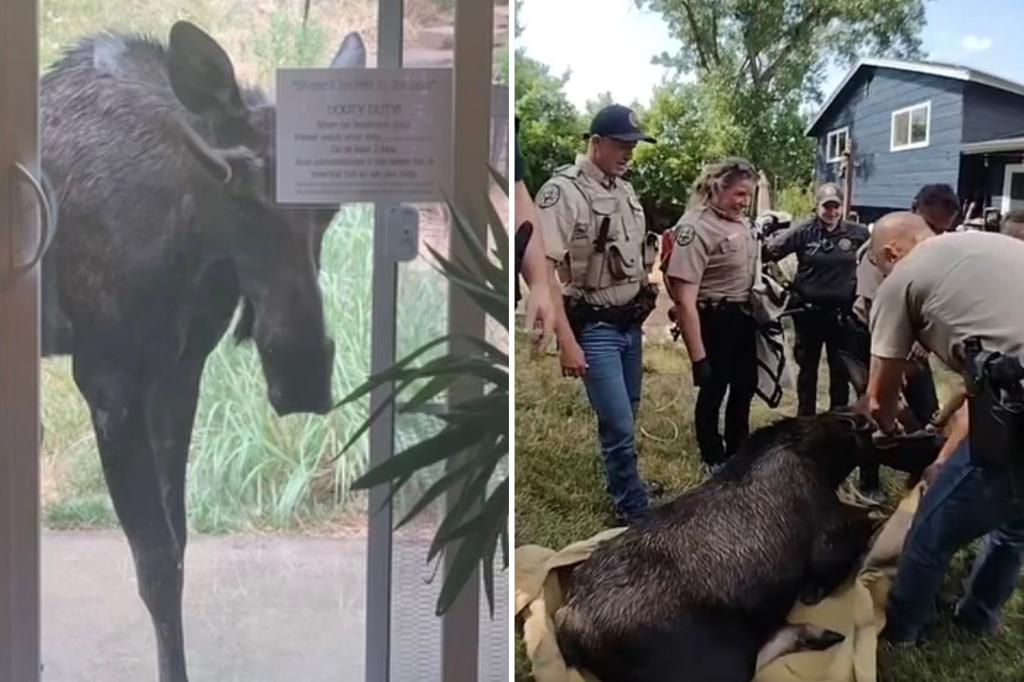A large moose that wandered into a backyard in Colorado was successfully rescued by eight officers, including animal control officials. The Jefferson County Sheriff’s Office shared photos and videos of the rescue, showing the officers carefully carrying the 600lb moose on a large tarp into a trailer. The moose was reported to be peering into windows and taking a break in the yard before it was safely transported back to its natural habitat. Moose are the largest member of the deer family, with adult males weighing between 1,200 to 1,600 pounds and adult females weighing 800 to 1,300 pounds. Only the males, known as “bulls,” have antlers.
In recent months, there have been multiple moose rescues in the United States. In addition to the incident in Colorado, a baby moose in Alaska was saved from what police described as its “sure demise” after it fell into a lake and became wedged between a floatplane and a dock. Despite one of the calf’s legs being stuck across the top of the plane’s float, rescuers were able to pull the moose safely from the water. An officer helped the calf stand up on the boardwalk and watched it reunite with its mother, ensuring the young animal’s safety and well-being.
Moose are known for their large size, with adult males reaching up to 7 feet tall and weighing over 1,000 pounds. They are commonly found in forested areas of North America, Europe, and Asia, where they feed on vegetation such as twigs, leaves, and bark. Moose play an important role in their ecosystems as herbivores, helping to control plant populations and promote biodiversity. Due to their size and strength, moose are typically able to defend themselves against predators like wolves and bears.
The successful rescue of the moose in Colorado highlights the importance of prompt and efficient responses to wildlife encounters in urban areas. By safely capturing and relocating the moose back to its natural habitat, the officers involved in the rescue ensured the well-being of both the animal and nearby residents. In situations where wild animals come into contact with human communities, it is essential to prioritize the safety of all individuals involved and take appropriate measures to prevent harm to both humans and wildlife.
As human development continues to encroach on natural habitats, wildlife encounters in urban areas are becoming more common. Authorities and wildlife agencies must be prepared to respond to these situations quickly and effectively to prevent injuries to humans and animals alike. By working together to safely resolve conflicts between wildlife and human populations, we can coexist with the natural world and protect the diverse ecosystems that support a wide range of species, including majestic animals like the moose.
Overall, the rescue of the moose in Colorado serves as a reminder of the unique challenges and responsibilities that come with living in harmony with wildlife. By respecting wild animals and their habitats, we can help ensure the continued survival of these iconic species for future generations to enjoy. Through education, conservation efforts, and responsible wildlife management, we can work together to protect and preserve the natural world and the magnificent creatures that call it home.


